One of the best matches of the early rounds in the 2015 edition of Roland Garros took place on Court 3 between the veteran and the 21st seed Pablo Cuevas and the much-younger, yet fast rising, Dominic Thiem from Austria. Both players, enjoying the high points in their career in the recent months, showcased why they are among the best clay-court players in the world. Endurance, topspin, footwork, and patterns preceded big serves and flat winners. As a bonus, spectators got to enjoy two of the most stylish one-handed backhands in the game. More importantly, two highly intelligent players continued to modify their game plans to outwit the other, taking the spectators through a crescendo in each of the four sets, thus the score 7-6 7-5 6-7 7-5.
In this article, I will mostly focus on the first set, only because going through the whole match would take too long to write. But no worries! There was plenty happening in the first set alone. Furthermore, the first set largely determined the outcome of the matches for reasons to be explained later.
When the match started, it quickly became obvious that both players planned to begin the match with their respective plan A’s. On the one hand, Cuevas would stay back, keep the ball deep, move Thiem around with his forehand, and get aggressive only if the opportunity presented itself. On the other hand, Thiem would dictate the rallies with his big forehand, go for winners if the ball came short, and avoid high and loopy rallies. Although each player held to equalize at 2-2, it was evident that Cuevas was winning the long rallies, and Thiem was feeling more and more pressure to finish the point, or else. Cuevas was beginning to impose his game, keeping Thiem on the run just enough to let his forehand direct the traffic of the rally’s pattern.
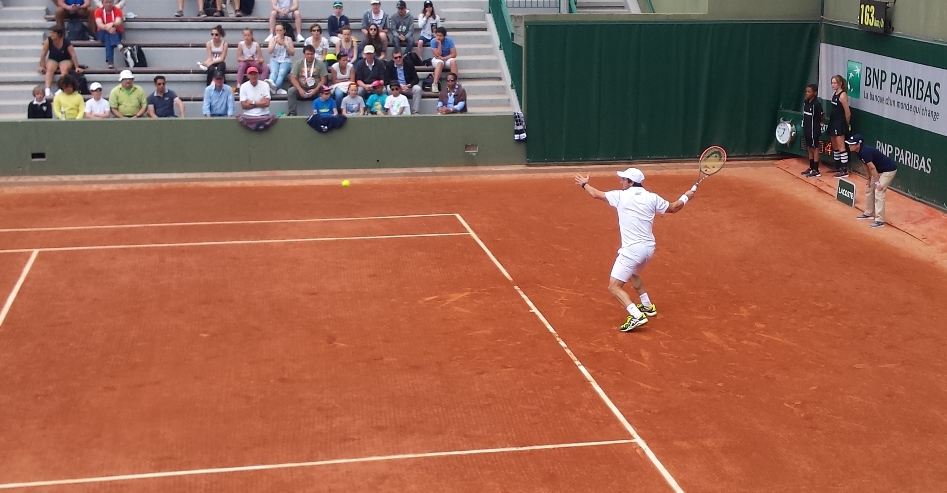
If you are in Thiem’s position at that stage, the last thing you want is your first serve to take a vacation. You need it for a few free points, and to set the tone for the next shot in the rally. Yet, it is exactly what happened to Thiem at 2-2. He only made one first serve that game, and was forced into rallies. In fact, Thiem knew going into that game that it was just a matter of time before Cuevas breaks him unless he can keep coming up with big serves and shots. And if you can’t hit big serves, it puts that much more pressure on your groundstrokes. In Thiem’s case, it led to errors that looked like unforced errors, but are in fact errors that resulted from the Austrian player putting too much pressure on himself due to his opponent flawlessly dictating every extended baseline rally up to that point (if only there were a way to keep stats on such categories). Here are the first two points of the 2-2 game:
And just like that, it’s 0-30. Thiem does recover to 30-30 thanks to aggressive play, but then tries to go for too much too soon again:
On that break point, Thiem attacks again, this time on a ball that allows him to step inside the baseline. Moving all the way to the backhand doubles’ alley, he unleashes a forehand winner (who does not do that nowadays anyway?):
Having gotten back to deuce, now Thiem finds himself stuck exactly in the kind of point that he would like to avoid. Cuevas pushes him around the baseline, never giving him a chance to get a firm grip on the rally and get on the offensive.
This is precisely why Thiem has been unloading on those early shots in the rally that led to errors. If he does not go for them, this type of point happens over and over again. In the ensuing break point (2nd one of the game), Thiem once again steps in to hit a big “jump” backhand but does not quite pull the trigger. So what happens? Cuevas punishes Thiem’s half-way-passive-aggressive backhand by sticking a winner right back to the open corner:
Now, you would think that at this point, Cuevas has taken charge in the match. He would have, except that in the next game, he pulls out of his “error” bag one of his 3 double faults in the match, and follows it up with a forehand drop volley in the net that he would make nine out of ten times. It is an uncharacteristically generous game by the otherwise error-free Cuevas that brought Thiem back to life.
Thiem did indeed come alive. For example, until then, Cuevas was exclusively serving to his backhand to start the rally, including a high-kick serve to the ad side, making the Austrian hit above the shoulder and from the outside of the court. But now, all of a sudden, Thiem begins to step in and catch the ball on the rise, immediately putting Cuevas on the defensive. Check out his placement on the backhand returns during the 4-3 game:
He even got to run around the backhand to hit some direct forehand winners (this one at 4-3 up, and 40-30 down on Cuevas’ serve):
This led to Cuevas taking bigger cuts on his first serves, or using a strong outside kick as the first serve, in order not to allow Thiem to attack. This resulted in Thiem having to slice some of the backhand returns because he either had to stretch too far and/or too high to hit topspin, as is the case in this return below in the 6-5 game:
In other words, Cuevas adjusted and responded to Thiem’s increasingly intimidating game by tweaking his serve, just enough to hold his serve and carry the set to a tiebreaker. Thiem still had the momentum going into the tiebreaker, and definitely looked like he was on his way to a 1-0 lead in sets, when he went up 5-1 in the tiebreaker. Check out how Thiem punishes Cuevas for favoring his forehand too much and leaving too much court open on the deuce side at the 2-1 point in the tiebreaker:
Thiem gets a commanding 5-1 lead in the tiebreaker. Then, for one reason or another, he gets passive for the first time in the tiebreaker and lets up during the rally. Did he think that Cuevas lost hope at 1-5 and would hand the next two points to him? In any case, here is what happens that point:
Cuevas also wins the next point to get back to 3-5. Suddenly, it’s a different dynamic. Thiem feels the pressure, leading to this gag on the 5-3 point:
It is now 5-4 and what looked like a blow-out tiebreaker for Thiem has turned into a tight, tedious affair. It soon turns into a nightmare for him when this happens when he has set point on his racket at 6-5:
Yep! Thiem served his only double fault in the set (total of 3 in the match) on set point! The clip showed you Pablo’s subdued relief as if he were saying to himself “Wait! I saved a set point without ever having to hit a ball?”
At 6-6, the players change sides. Thiem, despite the disappointment, plays a solid, aggressive point, only to be passed by Cuevas. Pay particular attention to Thiem’s body language after the point before you read on:
From the end of that point until the beginning of the next, Thiem kept looking at his corner, talking and yelling to himself, seethed with anger over how he now finds himself a set point down after leading 5-1 in the tiebreaker and double-faulting on set point. Yet, here is when youthful enthusiasm can help you. You can mumble and whine for the full 20-to-30 seconds between two points, and still come up with the goods once the ball is in play. Watch how Thiem, still talking to himself few seconds before the point begins (continuous since the end of the last point above), plays his best point of the tiebreaker:
But it is not enough as Cuevas wins the next point to earn another set point at 8-7. This time, the veteran capitalizes on it when Thiem cracks on the very shot, the forehand from the backhand side of the middle, that has worked for him so well for the most part of the first set:
First set goes to Cuevas. How important was that? It was devastating enough for Thiem to temporarily lose focus and go down 0-3 in the second set. It forced him to play catch up the rest of the second set and the match. He did eventually get the break back, but still lost the second set 7-5. Thiem’s mental maturity is far ahead of his biological one. Most young players would have fallen apart after losing two sets like these against a seasoned, seeded player in a Major tournament. However, Thiem found a way to extend the match to a fourth set, playing a much smarter tiebreak in the third set (did go up early again, this time not letting up). Cuevas, unfazed by the length of the match, or the challenge from the talented Austrian, kept his cool and came up with the goods (which, in his case, means that he turned error free) in the latter stages of the fourth set to avoid a fifth one.
The match lasted 3 hours and 51 minutes. If the analysis above showed anything, Thiem and Cuevas do not just have plenty in the tank to survive long duels on clay, but also the I.Q. power to make them entertaining. The “chess” part of the first set was a fascinating “intangible spectacle” while the tangible ones such as stroke production and execution, tremendous agility and speed, and creative baseline tennis while maintaining consistency added the icing on the cake.
Note: Follow Mertov’s Tennis Desk on Twitter for frequent live updates from Roland Garros

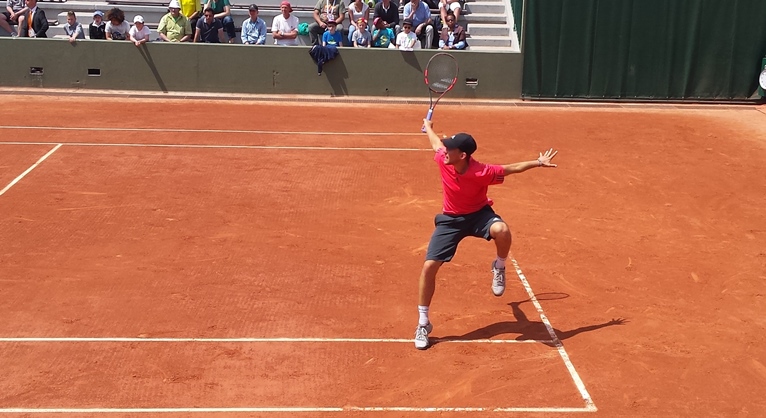
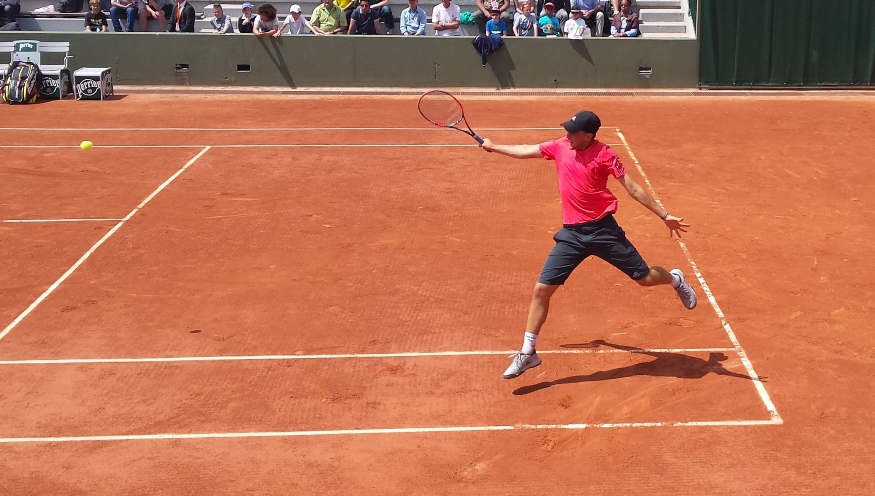
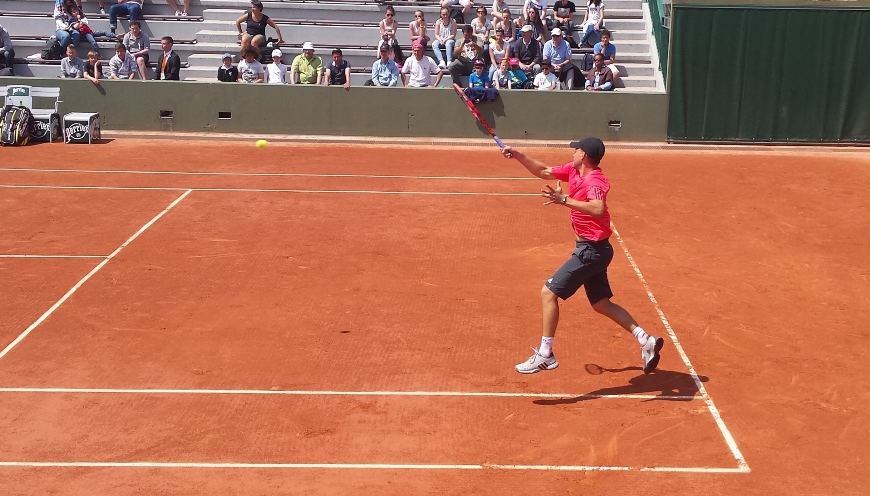
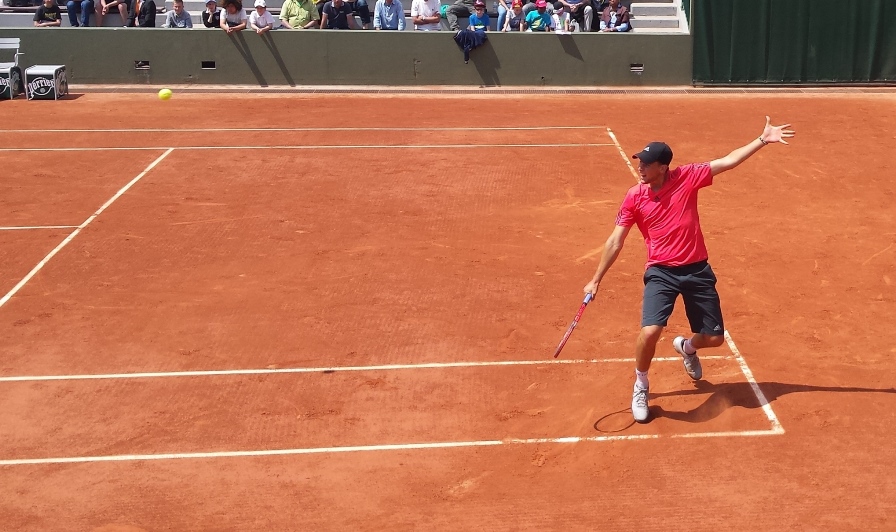
Mert,
Great analysis of the match. At the end of the day, the experience of Cuevas got the better of the youthful Thiem. I find that on clay, experience counts for more because it’s more tactical with longer rallies rather than the points being shorter on other surfaces. Would love to get your thoughts on this matter?
Umit
Umit thanks again for the comment..
I agree with you, especially in the earlier rounds. The exceptions are people like Bjorn Borg, Michael Chang, Gustavo Kuerten, and Rafael Nadal who were able to make a run to the title as youngsters. But the above guys also have high (very high) I.Q.’s which make up for the lack of experience.
Today’s tennis pretty much confirms that experience dominates youth in the Majors.